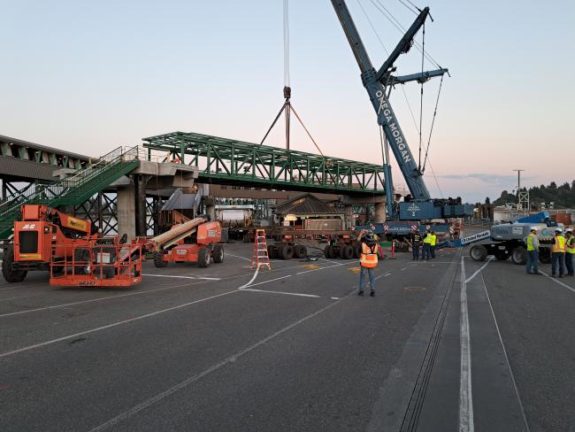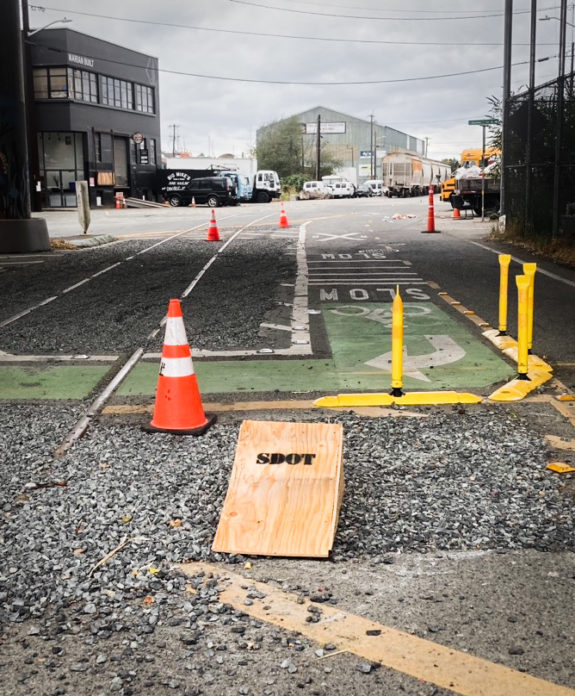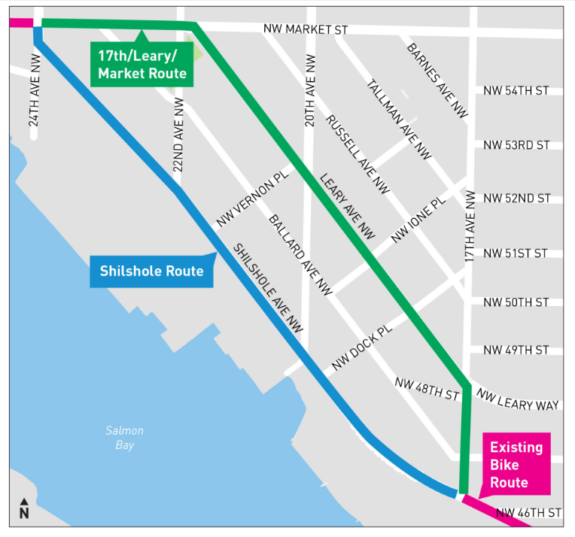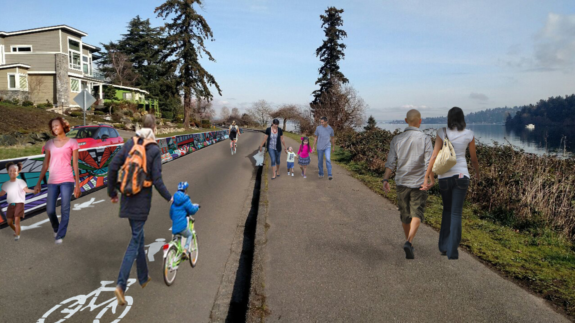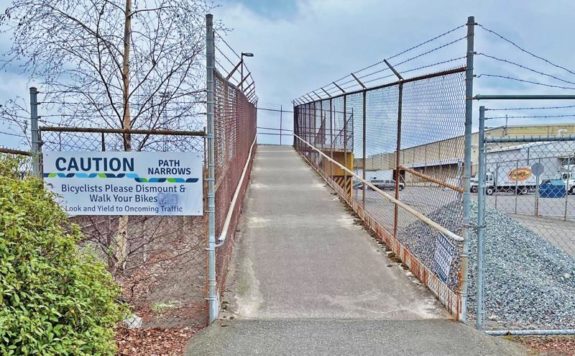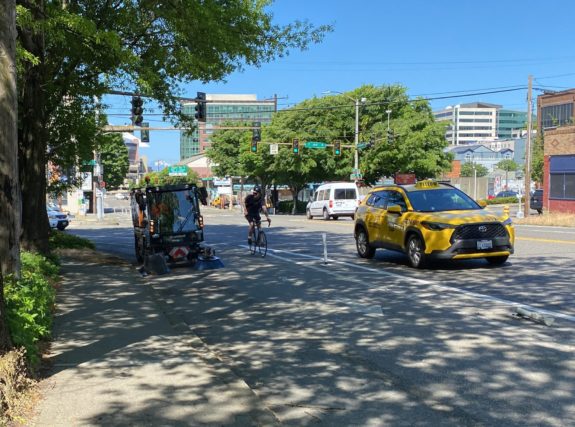
OK Broomer is starting to look like a boomer compared to the all-electric eSwingo 200+ bike lane sweeper SDOT is currently renting. The new style of sweeper is part of the city’s goal of electrifying as many city vehicles and machines as it can.
Tenting before buying is wise because while the sweeper is rated for 10 hours of operation per charge, that figure is based on operation on flat roads. And Seattle, well, our streets are rarely flat.
“One of SDOT’s goals is to determine the product’s operational capacity as it navigates the complex topography within Seattle,” SDOT noted in a blog post. “This will include assessments of the demand for sweeping, maintenance needs, charging time, charge hold, and durability in inclement weather.”
The rental period will go through the fall and winter when Seattle’s wonderful street trees drop an enormous volume of leaves onto the city’s bike lanes. So electric or not, it will be great to have more sweeping capacity available.
It the machine passes the Seattle test, it will be much quieter while also releasing zero emissions. While its reduced size is very useful for clearing protected bike lanes, it will surely also be useful for many other jobs.

